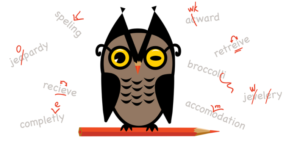Earlier this year, when many workers were facing sudden changes to how they did things, much of my working life seemed to stay the same. I was already working from home, and my clients were grateful that it was all systems go for at least one person working for them, even as all their usual systems just … went.
I tried to avoid most radio, TV and social media at the start, limiting myself to one news bulletin and one newspaper website daily. This was partly so that I could focus on my work, partly to compartmentalise the panic I felt when I exposed myself to the constant stream of scary news, and partly because I was bemused at all the hype about working from home. Big deal, I thought. Working from home? Some of us have been doing it for years. Just stop talking about it and get on with it! Me? Smug? … Much!
But I noticed I was also becoming irritated by the number of people who were ‘working’ from home while sharing stories about what they were watching on Netflix, what they were reading now they had so much time to spare, and what outdoor adventures they were undertaking (within 5 km of home). Why did they have so much time to spare if they were working from home? Why were they getting paid to work when they didn’t seem to have much work to do? Why were they talking as though working from home were a holiday?
Discussions about employees’ rights to reasonable working hours and a decent work environment vexed me as my work crept into evenings and weekends and left me with little time for Netflix, leisure reading or family time.
Of course, I knew that employees deserved to be paid even if their normality had fallen apart, but I was taken aback by how I had begun to feel about my own workload. So I stewed for a while – a good while – decided I was not going to become a begrudger, and tried to get over myself.
It took a while for me to realise that much of my frustration stemmed from the stress of adapting to what had changed for me. There has been a lot written about how the pandemic, especially because of its duration, has affected even those who seem to be ‘coping’. So even though not a lot had changed for me at a superficial level, I had probably underestimated the amount of stress involved in working in this changed world, where schools were closed, all non-essential activities were cancelled, and little seemed safe.
Some of my stress also stemmed from the volume of work I had accepted when I thought I would have much more time on my hands. Perhaps more significantly, however, much of my frustration stemmed from uncomfortable thoughts about just who was imposing a poor work–life balance on me. I work freelance, so I don’t have a boss. Could the culprit actually be … me? Had I developed habits that were endangering my enjoyment of work and the flexibility that working from home brings? If so, what could I do to restore the sense of balance I usually enjoyed while working from home?
It took a while for me to work it out, but it seemed to me that my main problem was drift. I had started out with good intentions, and for the most part I had stuck to them. But as I had become more experienced and there was more demand for my services, I had also let myself drift into habits that were not consistent with my original good intentions. Listening to the ‘rookies’ and the experts advising them, I was jolted into realising it was time to stop the drift and take control. I needed to work ‘at’ working from home if I was to stay positive, enthusiastic and creative.
Taking control meant reminding myself of why I had chosen to work from home, the corresponding bad habits that it is easy to drift into, and the need to be alert to drift when things are out of kilter.
Why? (1) Though it’s not guaranteed, FLEXIBILITY is a clear winner when working from home, especially for a parent who wants to be productive while ‘being there’ for family. It was definitely high on my list when I first chose to work from home. I could work early in the morning and through most of the school day. Then, having already put in a decent days’ work, I could be around to do all the after-school things.
Bad habit (1) It’s easy to drift into bad habits when you are expected to be flexible on other people’s terms. Flexibility only works if you still feel flexible, and when you allow external demands to reduce your control over work time, flexibility can morph into constant interruptions that feel more like constraint than freedom.
Alert (1) I now realise I need to be alert to the feeling of being pulled in too many directions that tells me I’m neither working the way I want nor available to others as I would like. This means carving out set times for work, reminding those around me that I’m working at those times, expecting interruptions to be for exceptional reasons, and being flexible within reason.
For example, I had to bring my car for its National Car Test (NCT) today (it passed), which required some planned flexibility that would get me back to my desk by lunchtime. Doing five errands for other people because they knew I’d be visiting a town for the NCT could have wasted the whole day (but it didn’t). It also means looking not just at demands that are truly external, but at how I can be the one creating situations where I am ‘always available’ (for example, had I done the five errands). It’s not always others who put us in such situations. As my 11-year-old told me recently in a different context, you can just say no. Perhaps she should be my boss.
Why? (2) CONTROL OVER MY OWN TIME is another winning feature of working from home. I’m an early riser and have no difficulty getting up at 5 a.m, having a quiet breakfast and getting down to some work. Added to the school day, that creates an ideal amount of time in which to work at peak concentration levels (for me). Even if I go for an early run, walk or swim, I have the length of the school day left for work.
Bad habit (2) Here too it’s easy to drift into bad habits. Starting early in the day works well when you finish early too. But starting early leaves you with a lot more hours in the day to work … and work … and work. With your office so easy to wander back to, it’s tempting to use those extra hours for work when really you should have clocked off. That’s fine for the occasional deadline, and the ebb and flow of deadlines are part of freelance life, but when always being on duty becomes a habit, or you say yes to more work when you should say no, or you wander back to your desk because there’s work you could be doing even though it could wait, exhaustion is inevitable, no matter how much you love your work (and I love it).
Alert (2): Allowing my working day to expand is my worst bad habit. It’s the one I fall back into even after I have resolved not to do it again. Lockdown made it easier to drift further into this habit because there was nowhere else to be most of the time. I probably have the rookies and their advisors to thank for making me more alert to the need to clock off at a reasonable time, and I think it’s the one I’ll need to remind my boss about a lot more. My boss? Oh, yes. That’s me (at least until I hire the 11-year-old as CEO).
Why? (3) This third ‘why’ is a bit of a cheat, because it’s something I discovered while working from home rather than having been an initial reason for working from home. But being able to turn breaks from work into CHORE and MOVEMENT BREAKS is something I find surprisingly satisfying, and when I do it well it can be a great way to incorporate balance in my working day, ticking the exercise and non-work to-do lists in one go.
I use Toggl to time my work, and I often wear an activity tracker that buzzes at 10 minutes to the hour to remind me to complete 250 steps in any hour. So while my work is sedentary, I get to trot down the drive with the dog, run up the stairs to fetch a load of washing, peel a few vegetables in preparation for dinner or run the vacuum cleaner around a room while taking a break I need to take anyway. I deliberately keep reference books on shelves rather than on my desk, so that I have to move around if I need to look at them. The movement keeps me alert, stops me from getting too stiff, gets small chores out of the way, and apparently improves my prospects for a long life.
Bad habit (3) Of course, it’s easy to drift here too. Need to get 30 pages done today? Right, just wait till I’ve washed the dishes, cleaned the worktops, mopped the floor, walked the dog … and is that a messy bathroom I see? Oh, my, I’m stiff after all that scrubbing. I’ll just do some stretches before I get back to work.
Thankfully, I don’t fall into that trap too often, probably because it sits so badly with bad habit (2)! I use breaks to move, revive myself and get a quick chore done, but then it’s back to the desk. Books don’t edit themselves, after all, and unless I’m really tired, I have no difficulty focussing and disciplining myself to stay on track. I find most of what I do interesting, sometimes even fascinating, and I get great pleasure out of helping clients make their work as good as it can be. It’s usually pretty easy to choose that over cleaning a bathroom.
Alert (3): The exception for me is when I start a chore or errand after the morning school run (or its nearest relative when school is not on). When I do it right, I’m at my desk at 9:30. But if I see anything that needs to be done on my way to the desk at that time, I’m in danger of being off course for the day. So whether the school run has been a drive or a cycle or a reminder to someone at home that it’s time to start schoolwork, I know I need to head straight for that desk as soon as that’s done.
I’m not sure why starting a chore at this time leads me to find more to do – perhaps it’s because the rhythm of the work doesn’t really get going, or I am not yet absorbed for the day in the project I’m working on, so it’s not drawing me back like it would after a normal break – but I’ve learned that I need to be alert to the trap of 9:30 domesticity. Unless it involves flood, fire, blood or rubble, I need to walk past that mess!
What’s new?
All of this may seem to be a case of stating the obvious. My reasons for working from home are not unique. The bad habits are far from mine alone. And being alert to bad habits is hardly an original idea. What’s new for me, however, is a heightened awareness that choosing something for the right reasons does not always translate into good practice.
Without reflection, practice drifts, and the circumstances that curtailed work for many over the past six months actually expanded the time in which I could drift. For the first time in over seven year of working freelance, I felt resentful of others’ work situations and negative about my own. I didn’t let my standard of work slip, and the good practices that were part of my engagement with each piece of work continued, but my enjoyment diminished, my exasperation at the external factors interfering with work increased, and I felt adrift despite being busy with interesting projects.
Reflection on my smug big deal reaction to all the talk about working from home was just the kick I needed to remind myself of why I had made my choice, how lack of reflection had allowed me to drift into bad habits, and why I needed to be alert to how my practice was enhancing or hindering my goals. Put simply, I realised I was far from an expert and that I needed to work ‘at’ working from home.
I’m a planner, and the start of the school year has always been my ‘new year’. It’s when my annual desk diary begins and I make resolutions. This year is a bigger unknown than the past few have been. I can’t plan with my usual certainty. But 2020 has taught me that drift can be insidious when plans are less certain, and that being alert to drift needs to be part of my plan. So here’s to 2020–2021, working ‘at’ working from home and sticking – flexibly – to resolutions.



